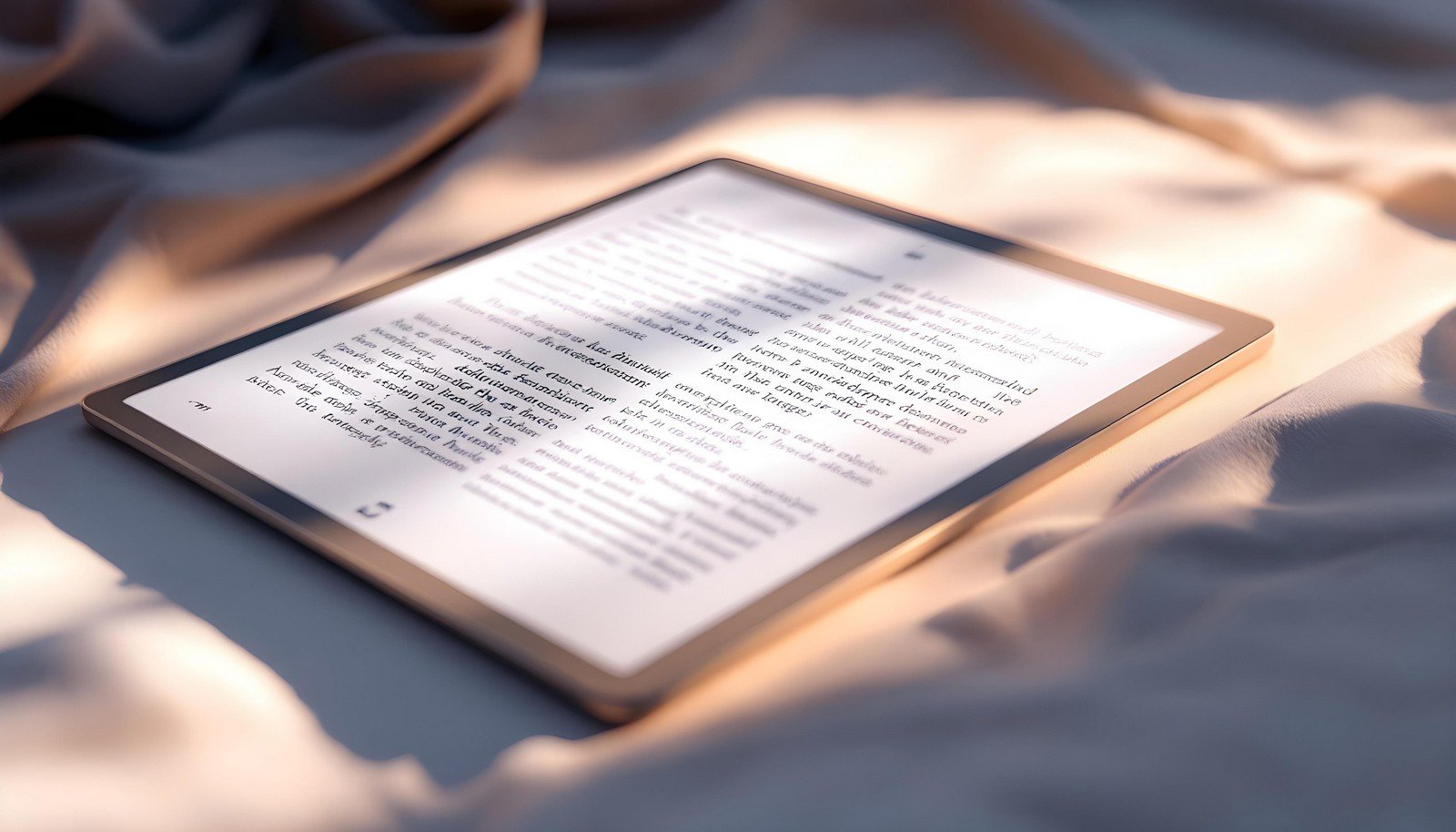E-ink Display

Quick Navigation:
- E-ink Display Definition
- E-ink Display Explained Easy
- E-ink Display Origin
- E-ink Display Etymology
- E-ink Display Usage Trends
- E-ink Display Usage
- E-ink Display Examples in Context
- E-ink Display FAQ
- E-ink Display Related Words
E-ink Display Definition
E-ink Display, or electronic ink display, is a type of screen technology designed to mimic the appearance of paper. It uses tiny microcapsules containing charged particles that align to form text and images when an electric field is applied. Unlike traditional LCD or OLED displays, E-ink Displays reflect ambient light, making them easier to read in bright conditions while consuming minimal power.
E-ink Display Explained Easy
Imagine your favorite book, but instead of printed pages, it's a screen that looks just like paper. You can read it outside in the sunlight, and it doesn't hurt your eyes like regular screens. This magic happens because tiny particles inside the display move around to show letters and pictures, just like a moving puzzle.
E-ink Display Origin
E-ink Display technology originated in the late 1990s, with its first applications in e-readers. The concept was based on research conducted at MIT's Media Lab, leading to the creation of the company E Ink Corporation, which commercialized the technology.
E-ink Display Etymology
The term "E-ink" derives from "electronic ink," emphasizing its similarity to traditional ink while being electronically controlled.
E-ink Display Usage Trends
E-ink Displays have gained popularity in devices like e-readers, digital signage, and electronic shelf labels. Their low power consumption and sunlight readability make them a preferred choice for applications requiring extended battery life and outdoor visibility.
E-ink Display Usage
- Formal/Technical Tagging: Display Technology, Low-power Screens, Reflective Display
- Typical Collocations: "E-ink technology," "electronic paper display," "e-reader with E-ink," "E-ink screen refresh"
E-ink Display Examples in Context
- Modern e-readers like Kindle use E-ink Displays to provide a comfortable reading experience.
- Supermarkets use E-ink Displays for electronic shelf labels, which can be updated remotely.
- Digital billboards with E-ink technology display images clearly even in direct sunlight.
E-ink Display FAQ
- What is an E-ink Display?
It is a type of display that mimics paper using microcapsules containing charged particles. - How is E-ink different from LCD?
E-ink reflects light and consumes less power, while LCD emits light and uses more energy. - Why is E-ink preferred for e-readers?
Because it is easy on the eyes and readable in sunlight. - Can E-ink Displays show color?
Yes, newer versions like E Ink Kaleido can display colors, though not as vividly as LCDs. - Are E-ink screens fragile?
They are robust but prone to damage from sharp impacts. - How does E-ink save power?
It only uses power when changing content on the screen, unlike LCDs that consume energy continuously. - Can E-ink be used for video?
Yes, though refresh rates are slower compared to other screens, making it less suitable for high-speed video. - Is E-ink readable in the dark?
It needs external light or a built-in front light to be visible in the dark. - What devices use E-ink Displays?
E-readers, digital signage, and some smartwatches use E-ink technology. - What are the environmental benefits of E-ink?
Low power consumption means less energy use, and its applications can reduce paper waste.
E-ink Display Related Words
- Categories/Topics: E-readers, Low-Power Displays, Digital Signage
Did you know?
E-ink Displays have been tested in space to ensure their durability and performance in extreme conditions, proving their versatility for diverse environments.
PicDictionary.com is an online dictionary in pictures. If you have questions or suggestions, please reach out to us on WhatsApp or Twitter.Authors | Arjun Vishnu | @ArjunAndVishnu

I am Vishnu. I like AI, Linux, Single Board Computers, and Cloud Computing. I create the web & video content, and I also write for popular websites.
My younger brother, Arjun handles image & video editing. Together, we run a YouTube Channel that's focused on reviewing gadgets and explaining technology.



Comments powered by CComment